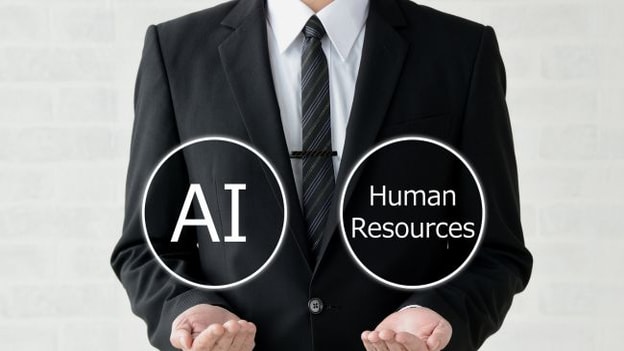AI 101: HR's crash course in artificial intelligence terminologies

AI has been infiltrating diverse sectors, and HR is certainly not immune. It's jumping on the bandwagon of automating tedious duties like screening resumes and presenting data-based perspectives for decision-making. With its knack for handling massive volumes of data and executing tasks at an unattainable pace for humans, AI can assist HR experts in directing their attention towards more strategic and value-enhancing endeavours.
However, there have been instances where HR professionals exhibited resistance towards AI, despite the undeniable benefits it offers. This resistance can stem from limited understanding of the topic or a lack of technical education. If you find yourself in this situation, fret not! We've got you covered.
Exploring essential terminologies in the World of AI
1. Machine learning: As a subset of artificial intelligence, it enables systems to improve their performance through experience, without requiring explicit programming.
2. Natural Language Processing (NLP): The ability of computers to understand and interpret human language, including speech and text.
3. Neural networks: Computing systems inspired by the human brain, consisting of interconnected nodes (neurons) that process and transmit information.
4. Deep learning: A branch of machine learning that uses neural networks with multiple layers to learn and extract complex patterns and representations from data.
5. Data mining: The process of discovering patterns, insights, and relationships in large datasets.
6. Predictive analytics: The use of historical data and statistical models to make predictions about future outcomes or trends.
7. Computer vision: It pertains to the realm of AI that concentrates on empowering computers to comprehend and decipher visual data, including images and videos.
8. Chatbots: AI-powered virtual assistants or conversational agents that simulate human conversation and provide automated responses.
9. Robotic Process Automation (RPA): The use of software robots or "bots" to automate repetitive tasks and processes, mimicking human actions.
10. Sentiment analysis: The process of determining and analysing the sentiment or emotional tone expressed in text or speech, often used for social media monitoring or customer feedback analysis.
11. Reinforcement learning: An AI approach where an agent learns by interacting with an environment and receiving feedback or rewards based on its actions.
12. Computer Natural Language Understanding (CNLU): The ability of computers to comprehend and understand natural language, including the context, meaning, and intent behind human communication.
13. Image recognition: The capability of AI systems to identify and classify objects, scenes, or patterns in images or visual data.
14. Recommendation systems: AI algorithms that analyze user preferences and behavior to provide personalised recommendations or suggestions.
15. Virtual Reality (VR) and Augmented Reality (AR): Technologies that blend the physical and digital worlds, offering immersive experiences and enhancing perception through computer-generated sensory inputs.
16. Data privacy and ethics: The ethical considerations and regulations surrounding the collection, storage, and use of personal data in AI systems.
17. Bias in AI: The potential for AI algorithms to reflect and perpetuate biases present in the data they are trained on, leading to unfair or discriminatory outcomes.
18. Explainable AI: The need for AI systems to provide understandable and transparent explanations for their decisions and predictions.
19. AI governance: Policies, guidelines, and frameworks that regulate the responsible development and deployment of AI technologies.
20. Algorithmic fairness: Ensuring that AI algorithms do not disproportionately disadvantage or discriminate against certain individuals or groups based on protected attributes such as race, gender, or religion.
Gaining an understanding of fundamental concepts such as machine learning, NLP, neural networks, and deep learning equips HR teams with the ability to effectively explore AI solutions. These concepts lay the groundwork for leveraging data mining, predictive analytics, computer vision, and chatbots to automate tasks and enhance decision-making processes.
Additionally, areas like RPA, sentiment analysis, and recommendation systems present practical opportunities for optimising workflows and delivering superior customer experiences. It is crucial for HR professionals to also consider the ethical aspects of AI, including data privacy, bias mitigation, explainability, and algorithmic fairness. Armed with this knowledge, HR departments can embrace AI technologies responsibly, fostering their successful integration within the workplace.












